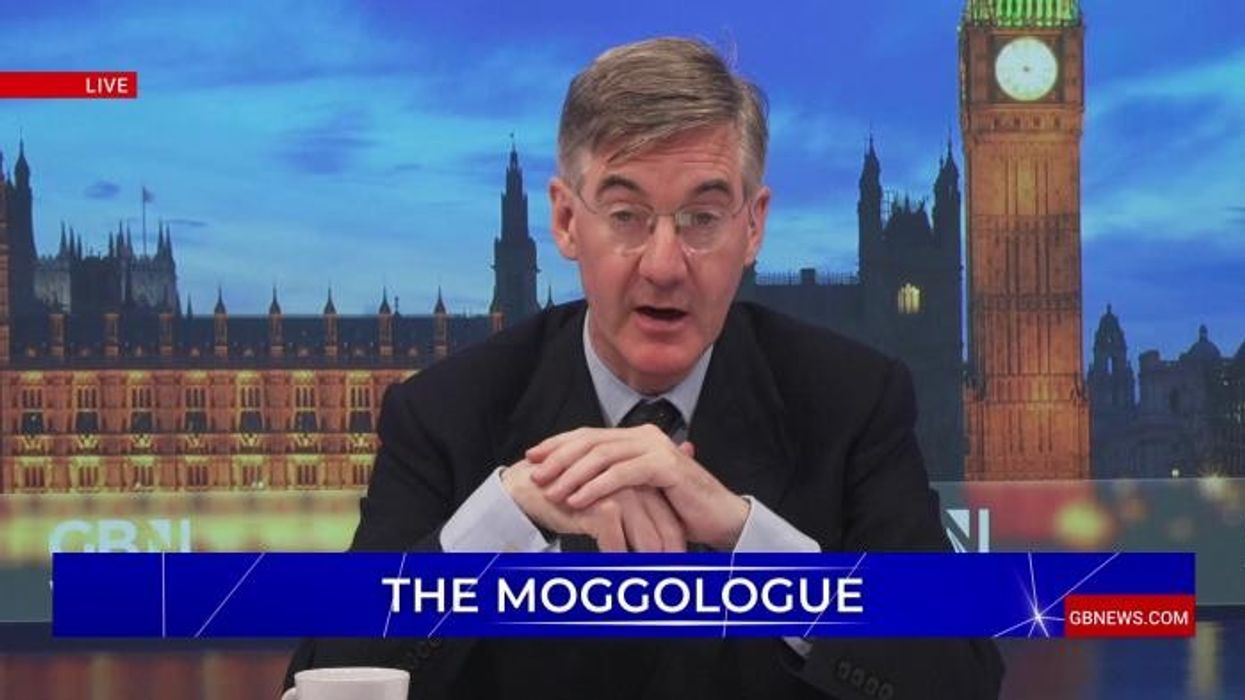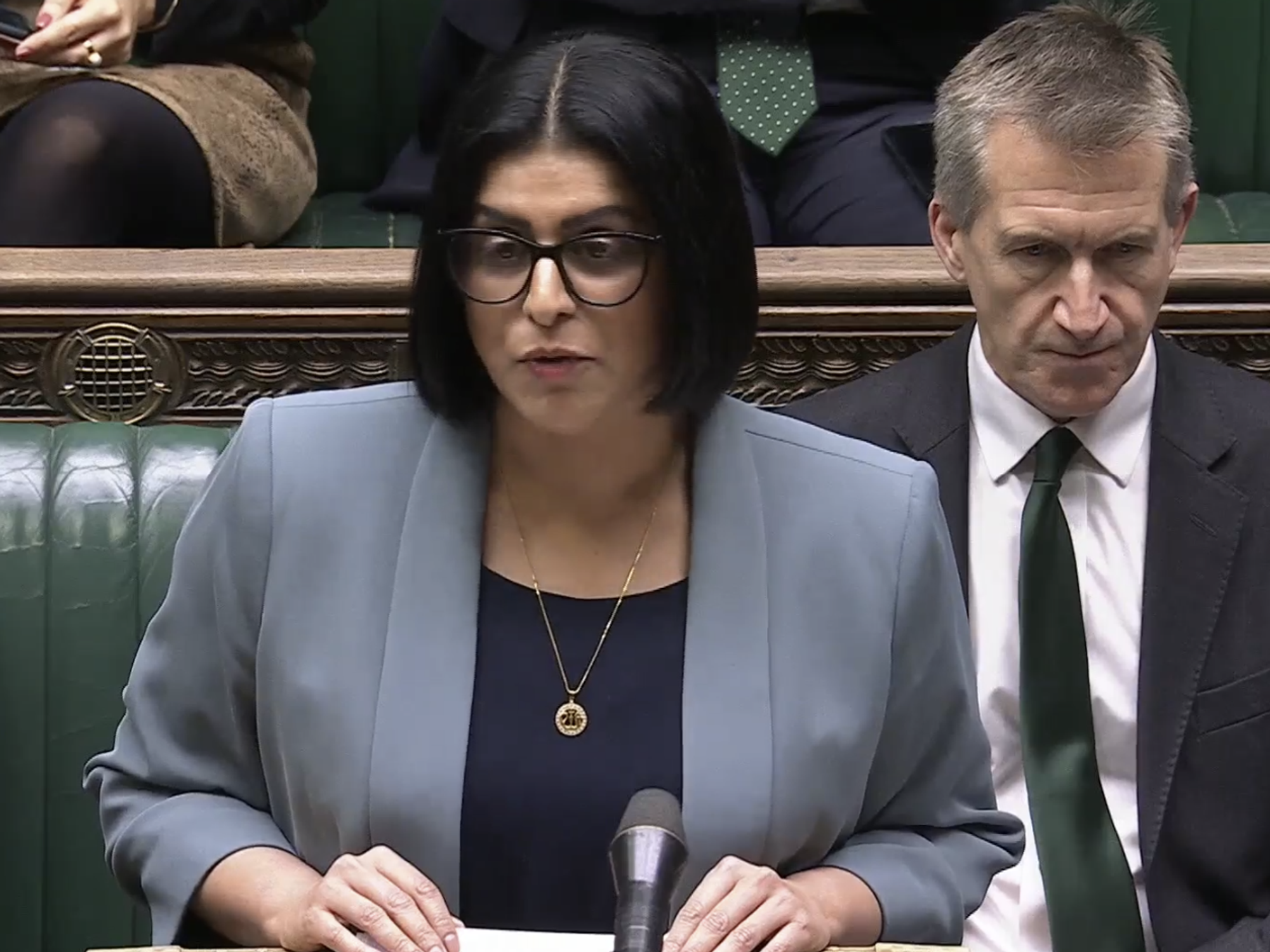Three SHOCK graphs explain why Keir Starmer is ploughing MILLIONS into stopping Reform UK

Reform's meteoric rise looks set to continue, new YouGov polling suggests
Don't Miss
Most Read
Trending on GB News
As Labour shifts gears in a bid to stem the rise of Reform UK, three graphs suggest Nigel Farage's party is here to stay.
The new YouGov polling comes after Reform blitzed the local council elections earlier this month, taking control of 10 local councils, winning two mayoral races, and adding a fifth MP to its ranks.
For many disillusioned voters, the results sounded the death knell for the Conservative Party - but they did not augur well for Labour either.
Of the almost 200 council seats Labour lost to other parties, Reform picked up just over 150, with double-digit gains in Durham, Doncaster, Lancashire, North Northamptonshire and Northumberland.
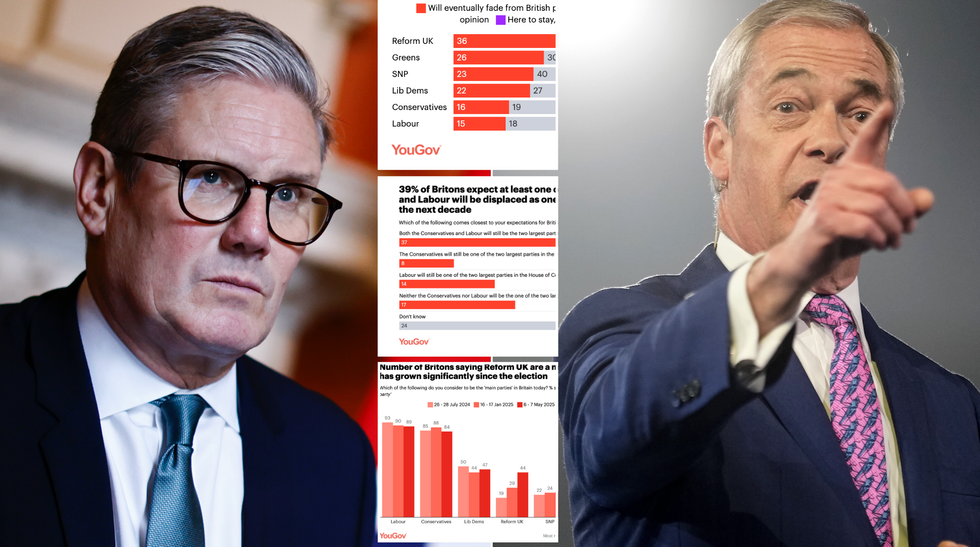
Three shock graphs explain why Keir Starmer is panicking as Labour ploughs MILLIONS into stopping Reform
|Getty Images/YouGov
Reeling from the shock result, Keir Starmer has made a concerted bid to quell the rise of Reform by unveiling a raft of policies and dialling up rhetoric that critics claim could have come straight from Nigel Farage's mouth.
This line of attack came from both the left and the right following the release of Labour's immigration white paper on Monday, with the former accusing Starmer of betraying his party's traditional values and the latter claiming the PM did not go hard enough.
For now, the PM appears to be doubling down on this tactic. The Times reported on Wednesday that Labour is preparing to invest millions of pounds into community projects in regions that recently shifted their support to the Reform Party.
The initiative includes resident-led local investment decisions and aims to address economic inactivity, poor education, and health outcomes.
Will all this be enough to stem the turquoise tidal wave?
Despite Labour's efforts to thwart Reform's rise, new polling from YouGov suggests the insurgent party is here to stay.
New polling from YouGov shows that regardless of where the public see the parties in a decade, there is a growing acceptance among Britons that – right now – Reform UK count as a ‘main party’.
As the graph below shows, the public are now split 44 per cent to 46 per cent on whether or not they sit in the top category, a significant increase on the 29 per cent who said Reform UK were a main party in January and the 19 per cent who said so last July.
Acceptance of this status has grown among all voters, most notably with a majority of Conservatives (52 per cent) now saying Reform UK are a ‘main party’, up from 36 per cent in January.
A third of Labour voters (33 per cent) now give Farage’s party this classification, up from 17 per cent at the start of the year, while the rise among Reform UK voters themselves has been from 78 per cent to 87 per cent.
Figures for the other five largest parties in Britain have remained much steadier over that period.
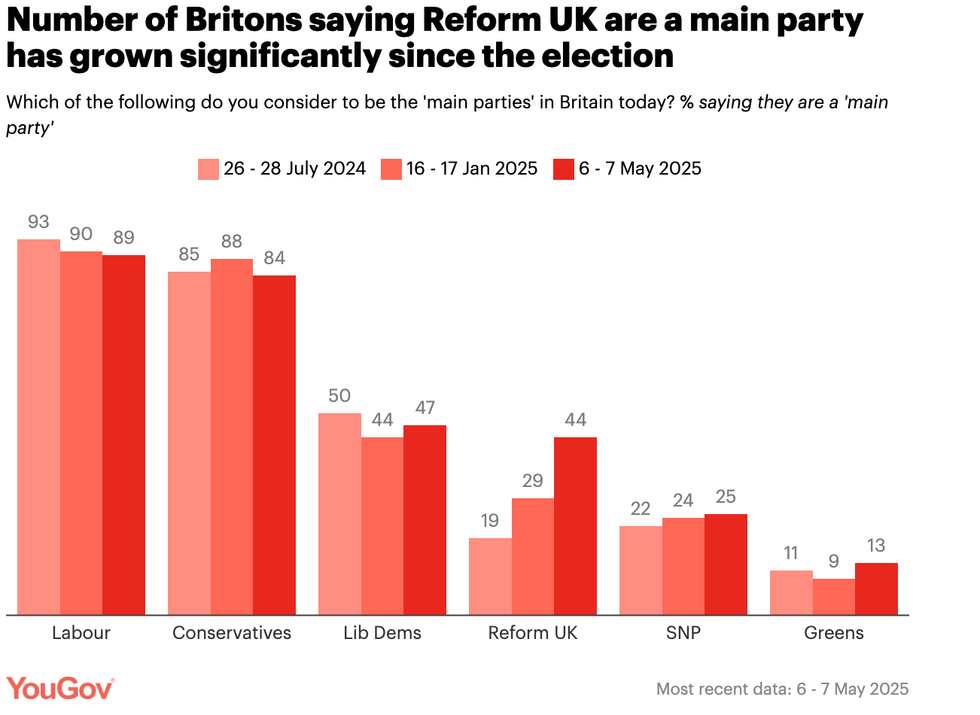
There is a growing acceptance among Britons that – right now – Reform UK count as a ‘main party’.
|YouGov
- POLL OF THE DAY: Do you trust the Government to protect Britain's fishing industry in talks with the EU?
- EXPOSED: Labour accused of 'openly inviting MILLIONS' of immigrants with 'hidden' detail inside report
- SHOCK poll has Reform eating into Labour's lead in London as Tories falter - would YOUR seat turn light blue?
The polling also suggests that the two main parties' vice grip is starting to loosen, with 46 per cent of Britons believing that Reform will remain relevant in the next 10 years compared with 36 per cent who say they will fade from relevance (see graph below).
However, Britons are most confident in the ability of the Conservatives and Labour to stick around, with around two-thirds of the public (65-68 per cent) believing they’ll still be an important part of British politics for at least the next 10 years, compared to just 15-16 per cent who think either will eventually fade from politics.
This underscores the enormity of the challenge ahead as Reform attempts to replace the Conservatives to become the main party of opposition.
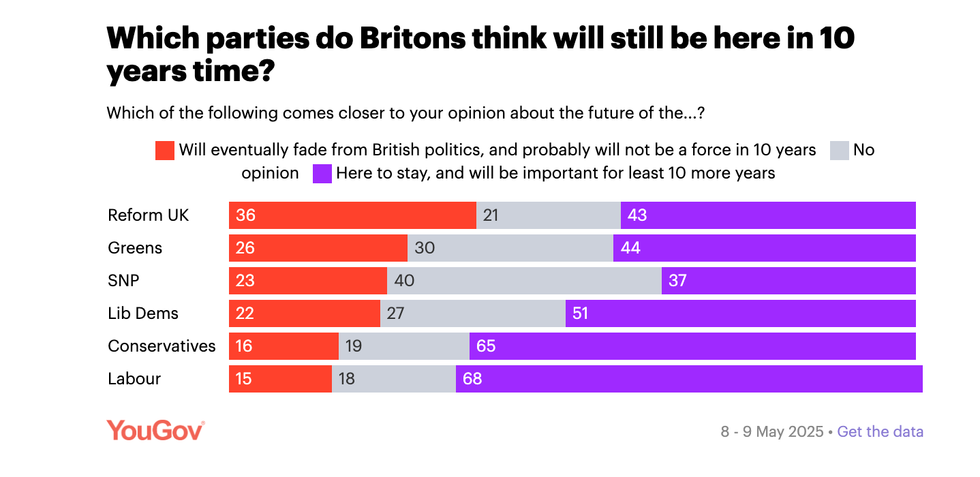
However, even here, Reform has reasons to be optimistic. As the graph below shows, while two-thirds of Britons believe that each of the Conservatives and Labour are likely to remain an important part of British politics for the next 10 years, just 37 per cent of the public believe they’ll both still be the largest two parties in a decade’s time.
Just over one in five Britons (22 per cent) believe that at least one of them will have been replaced as one of the two largest parties in the House of Commons by 2035, while one in six (17 per cent) expect that neither the Conservatives nor Labour will retain their current status.
Reform UK voters are most likely to anticipate the demise of the traditional duopoly, with just 11 per cent expecting the Tories and Labour to still be the ‘big two’ in 10 years’ time, while 44 per cent believe they’ll both have been replaced.
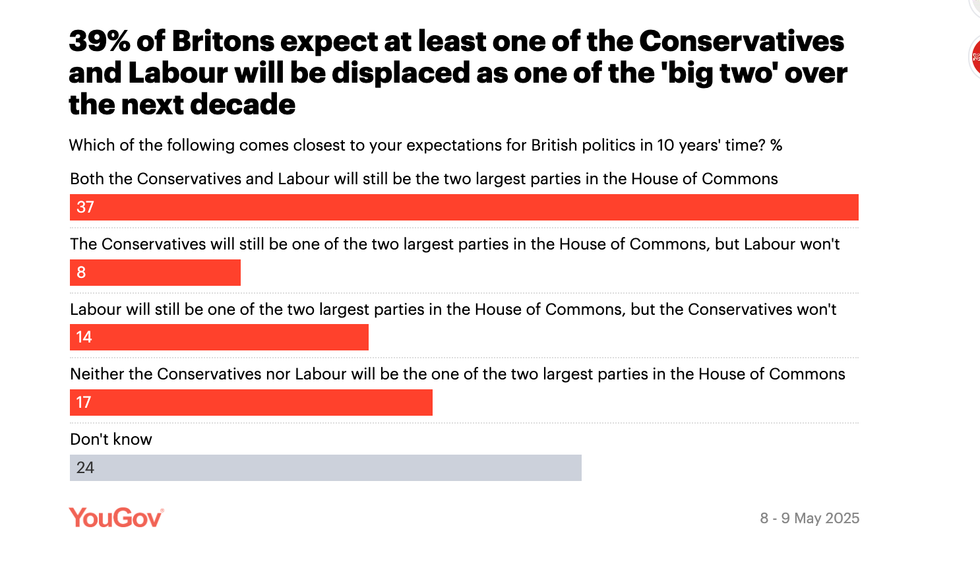
Just 37 per cent of the public believe Tories and Labour will both still be the largest two parties in a decade’s time.
|YouGov
A fifth of Conservatives (21 per cent) and one in eight (12 per cent) Labour voters anticipate their party not being one of the largest two in 2035.
A cautionary tale
Ultimately, these are predictions, and they come with the caveat that the British public doesn’t have a perfect track record in predicting the future of the party system.
In Autumn 2014, with UKIP having recently won the 2014 European elections and the Lib Dems on course for a near-wipeout, we asked the same question. Britons expected the Lib Dems to fade from politics within 10 years by a margin of 48 per cent to 25 per cent, while tending to believe UKIP were here to stay by 48 per to 36 per cent.
Last year’s general election, ten years on, saw the Lib Dems win the most seats for their party and its predecessors in a century, while UKIP won close to 0 per cent of the vote.


